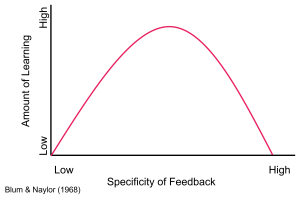8-3: The Learning Process in Training
 Now let’s dive into the fascinating world of how people actually learn. Effective training design requires understanding of fundamental learning principles that govern how individuals acquire, retain, and transfer new knowledge and skills. Think of this as the science behind successful training – ignore these principles at your own peril!
Now let’s dive into the fascinating world of how people actually learn. Effective training design requires understanding of fundamental learning principles that govern how individuals acquire, retain, and transfer new knowledge and skills. Think of this as the science behind successful training – ignore these principles at your own peril!
Definition of Learning
Learning represents a relatively permanent change in behavior that occurs as a result of experience or practice. For training to be effective, it must produce measurable differences in learning outcomes. Organizations draw on extensive learning research to design interventions that optimize knowledge acquisition and retention.
Principles of Learning
Reinforcement Theory
Reinforcement theory suggests that behavioral change occurs through manipulation of behavior consequences, including both reinforcement and punishment. Here’s the key: reinforcement that occurs immediately after correct behavior proves most effective for strengthening desired responses.
Trainers can enhance learning and knowledge transfer by identifying rewards or outcomes that trainees find most motivating, which may include praise, recognition, career opportunities, or tangible rewards. The trick is figuring out what actually motivates each individual learner.
Social Learning Theory
Social learning theory proposes that behavioral change can occur through observation of others without direct reinforcement. Behavioral modeling involves trainees observing actual job incumbents or videos demonstrating positive modeling behaviors, rehearsing behaviors through role-playing techniques, receiving feedback on rehearsals, and finally applying behaviors in job settings.
Research demonstrates that behavioral modeling effectively improves interpersonal skills through structured practice exercises that break complex tasks into manageable components. Taylor, Russ-Eft, and Chan (2005) conducted a comprehensive meta-analysis of behavior modeling training studies and found significant positive effects on learning outcomes, with the strongest effects occurring when behavioral modeling included both positive and negative examples of target behaviors.
Active Learning vs. Passive Learning
Here’s something that might surprise you: active learning proves superior to passive learning approaches for most training objectives. Active learning requires trainees to engage with content through practice, discussion, problem-solving, or other participatory activities rather than merely receiving information.
Think about it – would you rather sit through a three-hour lecture about swimming, or actually get in the pool and practice? Active approaches promote deeper processing and better retention compared to lecture-based methods that position trainees as passive recipients.
Kraiger, Ford, and Salas (1993) developed a comprehensive framework for training evaluation that emphasizes the importance of active learning in promoting cognitive, skill-based, and affective learning outcomes. Their research demonstrates that active learning approaches lead to superior transfer of training compared to passive instruction methods.
Size of Learning Units
The size of learning units influences training effectiveness, with research supporting distributed practice over massed practice for most learning objectives. Distributed practice divides training into segments with rest periods between sessions, proving better for skill learning and long-term retention. Think of it like exercise – you get better results from regular workouts than from one marathon session.
However, distributed practice may not always be practical for organizational training due to scheduling constraints and resource limitations. Massed practice concentrates all training into continuous sessions without breaks. For highly organized, coherent, independent tasks, massed practice may prove more effective than distributed approaches.
Meaningfulness of Material
Meaningfulness of material significantly influences learning effectiveness. Training should provide overviews of material to establish context, use job-relevant examples that connect content to actual work situations, and sequence material in logical orders that build understanding progressively.
Meaningful material engages trainees and facilitates transfer to job settings. Nobody wants to learn abstract concepts that they’ll never use – make it relevant, and people will pay attention.
Practice and Overlearning
Practice and overlearning help trainees develop proficient performance while avoiding development of bad habits. Overlearning involves continued practice even after trainees appear to have mastered behaviors, resulting in high levels of learning and automaticity.
Skills that become automatic require fewer attentional resources and can be performed faster due to efficient neural connections. Automaticity proves particularly valuable for tasks performed under stress or time pressure. Think about how experienced drivers can navigate while having a conversation – that’s automaticity in action.
Feedback
Feedback represents one of the most critical elements of effective training. Timely and useful feedback about trainee performance enables trainees to make necessary adjustments and maintain motivation for continued learning. Delayed feedback reduces training effectiveness and learner satisfaction.
Both positive and negative feedback provide value when delivered sensitively and clearly, enabling trainees to understand what they’re doing well and what requires improvement. The key is making feedback specific, actionable, and timely.

Trainee Characteristics
Individual differences among trainees significantly influence training effectiveness and must be considered during program design and implementation. Understanding these characteristics enables trainers to adapt their approaches and organizations to select appropriate trainees for specific programs.
Readiness
Readiness involves possessing the background characteristics and necessary interest levels that make learning possible. General cognitive ability has consistently been shown to predict performance in training contexts. Schmidt and Hunter’s meta-analysis spanning 85 years found that cognitive ability demonstrated validity of .56 in predicting training outcomes, making it one of the strongest predictors of training success.
However, organizations must ensure that cognitive requirements relate to actual training demands and job requirements to avoid discriminatory practices.
Goal Orientation
Performance orientation reflects the degree to which trainees are concerned about performing well in training and receiving positive evaluations. Mastery orientation represents the degree to which trainees focus on increasing their competence through training rather than merely appearing competent.
Mastery-oriented trainees typically demonstrate better learning outcomes and transfer compared to performance-oriented individuals. It’s better to focus on actually getting better than just looking good.
Motivation to Learn
Motivation to learn represents perhaps the most critical trainee characteristic influencing training effectiveness. If trainees lack motivation to participate in training, programs will almost certainly fail regardless of design quality or trainer expertise. Some employees may attend training merely to fulfill requirements rather than genuine interest in learning, significantly reducing training effectiveness.
Goal Setting
Goal setting can strengthen trainee motivation and improve training outcomes. Specific, difficult goals improve performance both during training and in subsequent job application. Meta-analytic research demonstrates that setting pre-training goals results in higher post-training performance compared to training without specific objectives.
Trainer Characteristics
Effective trainers should establish specific objectives and communicate these clearly to trainees. They need solid understanding of how people learn and how this is affected by their approach. Strong communication skills are essential – avoiding rigid, closed, negative, or condescending approaches.
Different trainees may require different styles or treatment, so flexibility is key. Great trainers adapt their approach to their audience.
Transfer of Training
Transfer of training represents the extent to which material, skills, and procedures learned in training are applied in actual job settings. This concept is fundamental to training effectiveness, as training that fails to transfer provides little organizational value regardless of learning that occurs during training sessions.
Positive transfer occurs when training content improves job performance, representing the desired outcome of training investments. Negative transfer occurs when training content actually results in performance decline, typically due to interference between training content and job requirements or inappropriate training design.
How to Increase the Likelihood of Positive Transfer
The identical elements theory of transfer suggests that transfer likelihood increases when training situations closely resemble actual job conditions. This principle supports the use of realistic simulations, work samples, and on-the-job training approaches that maximize similarity between learning and application contexts.
Several factors can increase the likelihood of positive transfer: providing adequate active practice time during training; collaboration among trainers, trainees, and managers to set expectations; establishing maintenance programs for monitoring job performance; providing social support from supervisors and coworkers; and providing diverse situations and contexts for practice during training.

Guthrie’s One-Trial Learning Theory
Guthrie’s one-trial learning theory suggests that associations between stimulus patterns and responses develop at full strength after just one pairing. This theory challenges traditional assumptions about the necessity of repeated practice, proposing instead that learning involves acquiring specific responses under various conditions rather than strengthening connections through repetition.
Meta-analytic research on transfer identifies several factors that most strongly predict transfer success. The strongest predictors are cognitive ability, conscientiousness, and voluntary participation. Transfer climate and social support were also related to transfer.
Media Attributions
- Reading © Mohamed Hassan is licensed under a Public Domain license
- Specificity of Feedback adapted by Jay Brown
- Edwin Guthrie © Unknown is licensed under a All Rights Reserved license
